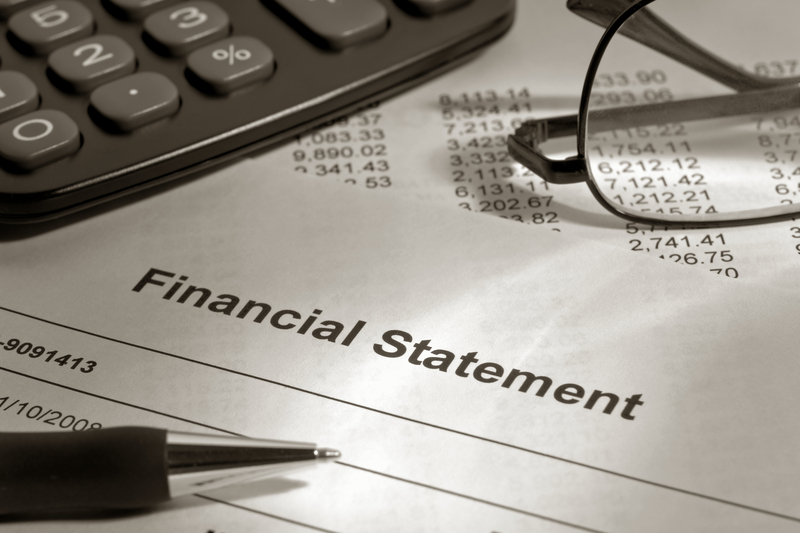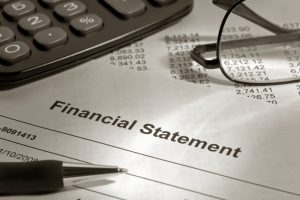Public companies, small businesses and non-profit organizations prepare a yearly report to provide information about past performance and to determine future goals. This year-end financial statement is an annual financial document that’s provided to shareholders, potential investors and analysts. It’s a good source of information about business performance and financial well-being.
What is a year-end financial statement?
Financial statements are records that communicate the activities and the financial performance of a business. They generally include a balance sheet, an income statement and a cash flow statement. They indicate:
- How much money is made
- How much money is spent
- What the company owns
- What the company owes
- The net value of the business
- Where the money came from and where it went
- The amount of money kept in the company
Why does a business need a year-end financial statement?
Companies generally hire an accountant to prepare their financial statements and then use the reports as a management tool to affect positive change within their organization. There are several reasons why a business needs financial statements:
- For performance measurement: Financial statements provide a gauge of performance that helps you review the success of your business and communicate your past, present, and future prospects to stakeholders. It allows you to assess management’s stewardship of the company, the viability of the business and is a starting point in forecasting future performance.
- For loan applications/investors: Many lenders will not consider a loan application without up-to-date financial reports. The information in a financial statement forms the foundation of a bank’s decision on whether to fund a venture or a company. A business can use financial statements to persuade an investor to buy into the company, or to attract a venture partner who can put money into a new project.
- For the CRA: In order to file corporate tax returns, Canadian corporations are required to produce financial statements. To avoid penalties, a company needs to have financial statements prepared on a yearly basis.
- For regulating cash flow: Financial statements help a business anticipate borrowing needs. Reviewing your statements can reveal trends your business can use in its cash flow strategies.
- For decision-making: Financial statements provide decision-makers within a company with the up-to-date information necessary to make effective choices. Financial reports are used to provide shareholders, partners and/or potential investors with key business metrics.
What is included in a year-end financial statement?
Financial statements are a set of documents showing a company’s current financial status. They communicate what your business owns, what it owes at a fixed point in time and they provide details about your assets, liabilities and equity. There are three reports that all businesses require for tax, financing and investing purposes and therefore are included in a year-end statement.
-
- Balance sheet: The balance sheet is a snapshot of a company’s performance at a given time. It identifies the company’s assets (inventory, equipment, vehicles, furniture, property, cash), liabilities (short-term debts, long-term loans, accounts payable) and equity (what would be left if assets were sold and debts paid). The balance sheet is an indication of the health of a business and helps business owners make decisions regarding how much inventory to order, if assets should be sold and whether a cash infusion is called for. Lenders use a company’s balance sheet to evaluate collateral and risk.
- Income statement: The income statement, also known as a profit and loss statement, summarizes a company’s revenue and expenses for a given period of time. This report shows a company’s bottom line. The income statement consists of four sections; revenues (net sales), cost of goods sold (inventory, freight, labour, indirect expenses), expenses (wages, advertising, depreciation, payroll taxes, office expenses, utilities) and other income (assets sold, interests on loans/investments). The income statement is the document you show to potential lenders/investors and is necessary during tax season. It indicates the profitability of a business’s current operations and guides management in how to expand or cut operations for greater profits.
- Cash flow statement: The cash flow statement reports the cash and cash equivalents that flow into and out of a company in a given time period. It measures how much cash a company has on hand. Your income statement shows your company’s bottom line while the cash flow statement shows how your business earns cash and where it goes. The information in this report is used to project how much revenue can be expected in the future, estimate upcoming expenses and make judgments regarding revenue gaps that may result in non-payment of business liabilities and debts. There are three activities documented in a cash flow statement; operations (accounts receivable, accounts payable, wages, merchandise expenses), investments (equipment and merchandise purchased, purchase of an asset, loans made to vendors, payments related to a merger or acquisition) and financing (bank loans, shareholder monies, personal investments, dividend payments, loan repayments, sale of company stocks). This report informs management of how much cash is available to pay expenses and invest in the business. Large discrepancies between the cash flow statement and the income statement help identify problems in a business’s operations.
Financial statements are a key tool for operating a business. They’re a snapshot of a company’s finances, provide critical information about a business’ performance and are the foundation for planning a company’s future course. These statements are used by bankers, investors and others to assess the health and liquidity of a business. A year-end financial statement shows the sustainability of a business and allows directors to make educated financial decisions to ensure success. Ask your Chartered professional accountant for help creating year-end financial statements for your business. They have the knowledge, experience and skill to help your company make wise financial decisions.
Need help with your company’s financial statements? Looking for an accountant for your company? Contact Cook and Company Accountants. Whether you operate a sole proprietorship or a sizable corporation with multiple subsidiaries, Cook and Company use their experience and expertise to help your business. We assist you in making your business a success. Contact us for a complimentary consultation.



